#no dig garden
Explore tagged Tumblr posts
Text
Gardening makes me feel so powerful. I can, with my own hands and careful usage of my brain, affect the environment so an area is populated by plants that I desire to be there, which will give me so much food I will be safe and secure for the entire year? I can change an area so it feeds me? By putting my hands in the soil and knowing how to anticipate the rain and where the roots are likely to grow and how long it takes to get a seed to fruition? I can do this with minimal effort and by adding organic matter to an area that will stop all other plants from growing, and fertilize my plants, so only my plants succeed? I can, on top of that, have all kinds of flowers growing in it, making it beautiful to me and helping all kinds of little bugs and critters have a home? I can do it in a way that makes the land even more fertile and healthy? And I'm not some sort of a deity?
Being able to control an area of land and make it into what you need to survive is powerful. Seeing it in your head and then watching it happen by the work of your own two hands is invigorating. Some things we cannot change. But we can change the area immediately around us so it both feeds us, and become beautiful and rich to us.
#gardening#no dig garden#no till garden#mulching#organic gardening#regenerative gardening#i love gardening#slugs have a few things to say about it tho lol
187 notes
·
View notes
Text
Mulch, compost, make wormeries, and DO NOT DIG. (we don't need to mention, "don't use weedkiller or chemical fertiliser" on this site, I'm hoping? Too tired to do a mini story about the Green Revolution con, you can Google it. Just compost, people, compost.
I grew up on stories of the Dust Bowl.
My dad’s parents were Okies–environmental refugees, before anyone had a word for it. They left their families, the land they were renting, their animals, took their 1-year-old daughter, and drove to California. My grandpa worked in a peach packing plant. My grandma cleaned houses.
They were so lonely that after a couple years they went back to Oklahoma, with their total savings of $20. Later, they bought land. Built a house. Survived.
My mom’s dad was a kid then, and his family stayed in western Kansas. Stayed because my great-grandpa was too damn stubborn to leave, stayed when their neighbors had all left, stayed because they didn’t have enough money to leave. They slept with wet rags over their faces. My great-grandpa tied a string around his waist, tied the other end to the house, and went to check on the cows, while my great-grandma tried to make soup from a little milk and a little flour. There was so much dust swirling in the air, the soup turned to mud. She cried, begged her husband once more to let them leave, and they went to bed hungry.
My grandpa’s oldest brother was the first one in the county to leave his wheat stubble in the field instead of plowing it under after the harvest. His neighbors made fun of him. His parents scolded him for having messy fields. 70 years later, at his funeral, someone told how people from Japan came to visit the farm, to see what he was doing differently.
More than 80 years after the Dust Bowl, I stood on a mountain in Ecuador watching, horrified, as a man with a tractor plowed a steep field. He would back up the hill, set the disk in the ground at the top of the field, and drive down, breaking up the soil, dragging it downhill. Dust billowed around him.
The man next to me, a rich-for-the-area farmer, sighed happily. “Look at all that dust. Isn’t that great?”
“What? No!” I was shocked.
“Why not? That’s what a modern farm looks like.”
I thought of the old black-and-white photos, dust clouds like black walls rolling in across the prairie. That’s what a modern farm looked like, too.
The next field down, four people and four oxen–well, dairy cows used as oxen–were planting. They used plows, too, but instead of a disk pulverizing the soil, their plow was a straight piece of wood, metal from an old leaf spring bolted to the end. One team of oxen used that plow to open a furrow, the women walking behind dropped maize seeds into the soil, and the second team of oxen dragged the same kind of plow just above the first, closing the furrow and burying the seeds. They walked along the hill–side to side, furrows running along the contour of the hill. If they were raising any dust, it wasn’t enough for me to see from across the valley.
The man with the tractor probably finished in an hour or two. The whole group, people and oxen and all, probably spent the whole day planting the same size field.
As the maize grew tall, you could see the difference: In the tractored field, the top rows were yellow, spindly, trying to root in the yellow-brown clay the topsoil had once covered. Down below, in dark, rich earth, the maize was tall, green, strong.
In Mali, years later, a farmer explained to a group of visiting scientists why, despite having made erosion control bunds, his rows of maize still went up and down the slope, instead of along the contour, parallel with the bunds. “Because of the wind,” he said, like it was obvious–because it was. In the rainy season, the wind comes from the south, and when storms come it blows hard enough to send dust and dishes and clothes left on the line flying and tumbling with it.
The rows of maize have to be parallel to that wind, or they’ll blow over. So sure, you can put the scientists’ earthen ridges in to block the downhill flow of water, but your rows can’t follow that meandering contour. Your rows have to face into the wind.
For thousands of years we’ve been coaxing, wrestling, dragging our food from the soil. If we’re careful, and lucky, we can make our peace with it. If we charge into places unknown–the high plains of Kansas and Oklahoma, the steep slopes of the Andes, the storm-swept fields of West Africa–if we plow, and plant, and harvest without thinking? Without learning from the place? Dust clouds blackening the horizon, stunted maize on worn-out soil, crops blown down in thunderstorms–the earth is forgiving, but only so far. We have time to learn, to make mistakes, to do what is easy even when it does harm, but only so much. Beyond that, we destroy the very literal foundations of our lives.

13K notes
·
View notes
Text
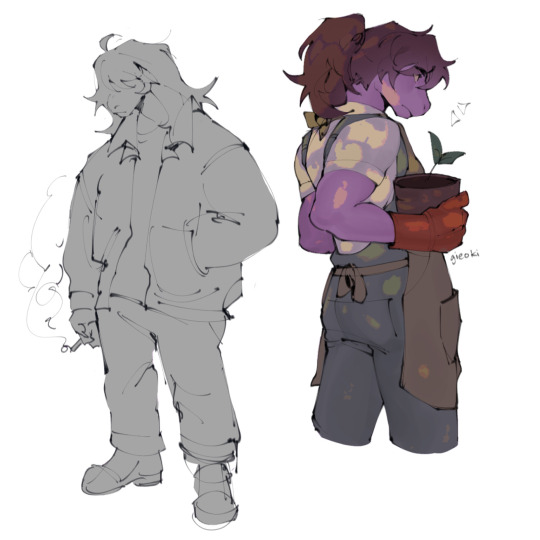
some context for the gardener stuff: i just think it’d be really cute if she became closer with the rest of the dreemurrs and started working for asgore’s flower shop
#susie deltarune#deltarune#utdr#susie#i think she’d really dig gardening if given the chance#her first time would be with toriel#the dreemurrs are her found family WHO SAID THAT#me i did#chapter 3 save me… save me chapter 3#my art
3K notes
·
View notes
Text
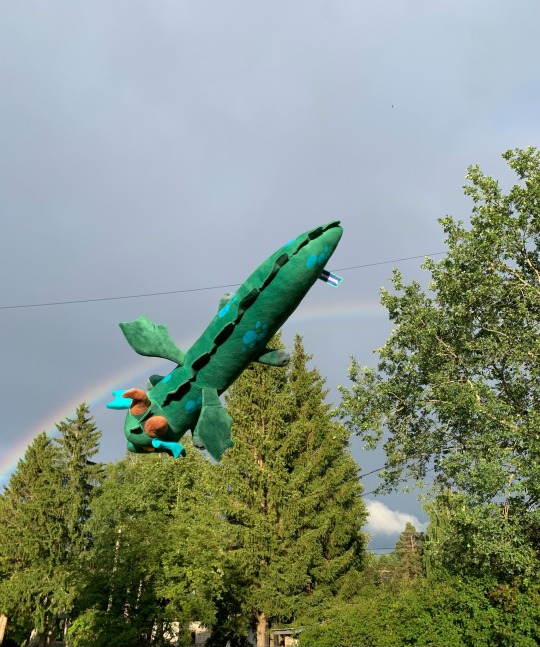
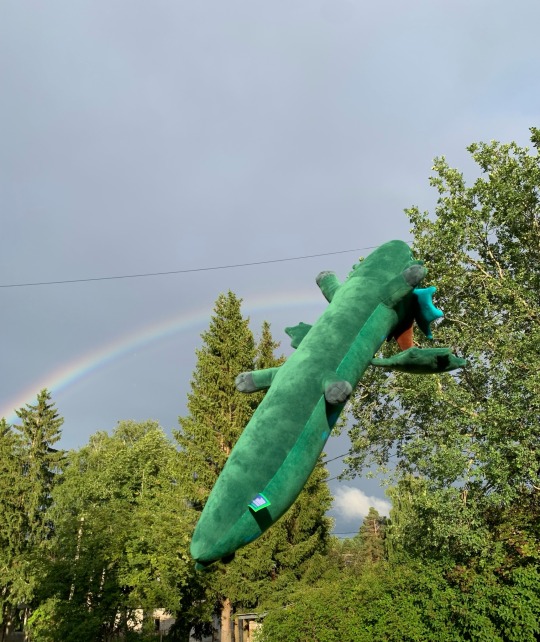


A desperate attempt to have an aesthetic photoshoot with this thing 😐
#dragons#plushie#the rainbow was a great opportunity#execution not so much#we’re digging up the garden and the poor thing#fell into a pile of dirt
1K notes
·
View notes
Note
You're making me crave fairies too AUGH JDCVKDNDNS littol fabric hoarding fairy,,,
What if I tell you you can be a pretty fairy and rizz up skeletons at the same time?
Just look at them!

This is how they spend their time together!!
#They dig up the dirt all day#and talk#and that's basically what Horror's garden need to thrive if I'm honest#it was well taken care of from before but since she came now he has company and extra magical help!#what's better than a slowburn in the backyard of the house of the skeleton you happen to romance!#life is short! join the fun!#and show me your fairy if you choose to make her plz jfhfjfj#5am talks#fairy!5am#horror sans#5am x Oak#You don't have to dig dirt too btw there are different kinds of fairies
449 notes
·
View notes
Text


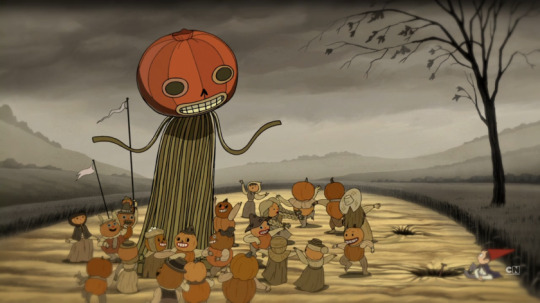
I am one step away from submerging into a complete brainrot which I suffered since I was 14, which is thinking about the meaning of white flags in Pottsfield.
It just seems weirdly specific to me, you know. It would have been one thing, if they were a decor element of the maypole, and it would have been one thing if they only gave the white flag to that lone citizen at the border, but no, its a repeating element. The flag even goes BEFORE Enoch in their formation in Aardman's short. So, what does it represent? For the town, for its celebration.
#I understand that I'm digging too deep but:#1) its animation#these flags didn't appear out of thin air#a whole group of people designed this#2) even if it did mean nothing during production#we still can think what small details like this can mean through in universe stand point#otgw#over the garden wall
462 notes
·
View notes
Text

first of all, good boys can do whatever they want, so jot that down
#palia#palia hassian#palia tau#my art#tau's friendship questline is my favorite i love how aggressively hassian does not care#oh he's digging holes in her garden? put some flowers in there then smfh
844 notes
·
View notes
Text
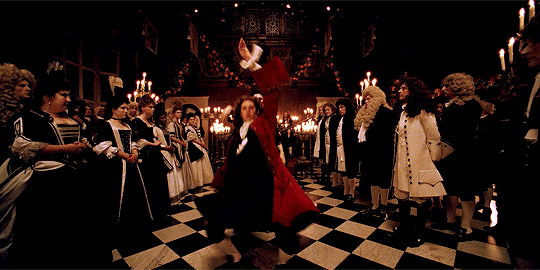

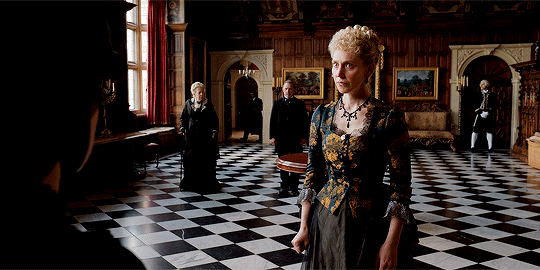
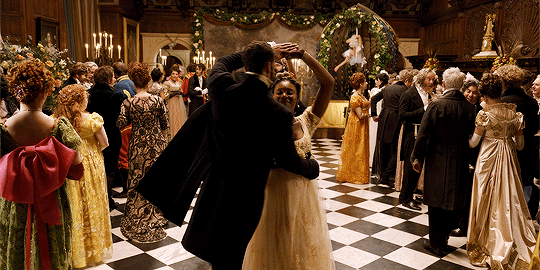
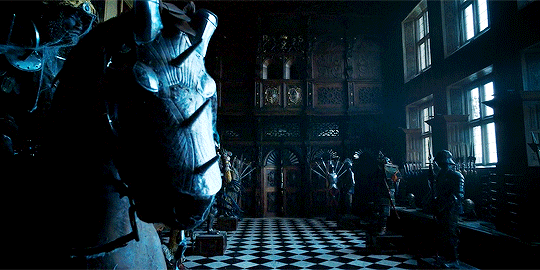


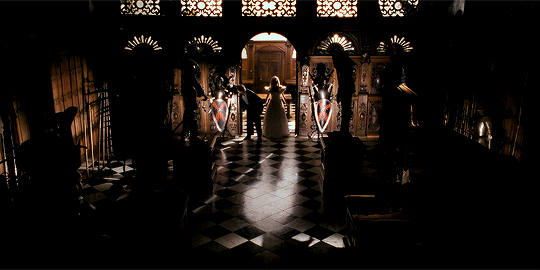




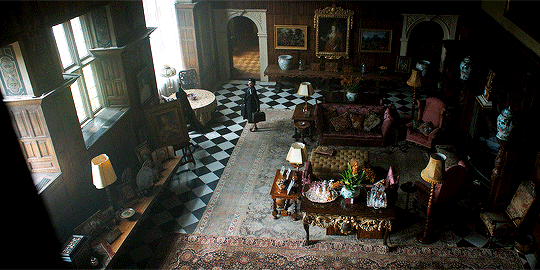
@PSCENTRAL EVENT 27: SCENERY
A Filmic Tour of Hatfield House: the Marble Hall
The Favourite (2018) dir. Yorgos Lanthimos
Shakespeare in Love (1998) dir. John Madden
Enola Holmes (2020) dir. Henry Bradbeer
Bridgerton (2020 - )
The Flash (2023) dir. Andy Muschietti
Get Him to the Greek (2010) dir. Nicholas Stoller
All The Money in the World (2017) dir. Ridley Scott
Batman (1989) dir. Tim Burton
Spider-Man: Far From Home (2019) dir. Jon Watts
Orlando (1992) dir. Sally Potter
Elizabeth: The Golden Age (2007) dir. Shekhar Kapur
Pride and Prejudice and Zombies (2016) dir. Burr Steers
Rebecca (2020) dir. Ben Wheatley
#filmedit#perioddramaedit#cinematv#filmtv#dailyflicks#bridgertonedit#my edit#pscentral#markstrongs#userlaro#supervalcsi#usermimsi#usertreena#usersole#usertj#usergiu#userzaynab#usersmblmn#uservalentina#userrainbow#hatfieldhouse#im sure after 3.5 years we all thought that first post was a one off#but the prompt made me dig up my old drafts#probably should've done the garden but maybe that will be next!#in less than 3 years. maybe!#my gifs#edit: concepts
846 notes
·
View notes
Text
What if during the years Luo Binghe was in the Endless Abyss, Shen Qingqiu not only knelt at the sword mound, but he also started planting white lotuses around the Peak?
It would start slow, just a few lotuses appearing in places they hadn't before, but they were so sparse that no one really took much notice. If they did, who would complain? It was just a flower and a lovely one at that. Their Shizun surely wouldn't mind the sight of them. He had been so distraught after the conference... Best to not trouble him with something so inconsequential.
Slowly more and more of those lotuses began to pop up, spreading to every lake and pond on the Peak. That couldn't be an accident. Never had lotuses grown on Qing Jing Peak before. Perhaps their Shizun commissioned An Ding to plant the lotuses, but for what reason they didn't know. Their Shizun had developed more of an interest in beasts than flora, but even that passion was smothered by his grief. Whatever the reason for the flowers, they must be special.
It wasn't until Ning Yingying informed her shixiong that she had been assisting the Peak Lord in cultivating the lotuses, hoping that it would ease his troubled heart. He had lost his most favored disciple and even after a year, their Shizun still knelt every day at the sword mound when he wasn't avoiding the memories haunting him on the Peak (though they would never speak of such things around their Shizun out of courtesy).
And so, they said nothing about the lotuses. If gardening and caring for the flowers that overtook their lakes and ponds brought comfort to the grieving heart of their Shizun, who were they to rob him of it? He was still in mourning, but when they did chance at seeing him caring so tenderly for the blossoming lotuses, they could see a little bit of that old light return to him, even for just a moment.
At some point, even the common people in the surrounding villages began to whisper about the widow of Qing Jing Peak, endlessly beautiful in his mourning amongst the tall bamboo and pure as snow lotus blooms.
#shen qingqiu is still doing mental gymnastics this whole time#he's only doing this because yingying had suggested it with such big puppy dog eyes#he didn't want to make her cry#and maybe he found he's actually good at gardening when it doesn't involve digging in too much dirt#he just likes to look at them#of course it doesn't make him think of his sweet little bun#what would make you think that?#scum villain au#svsss#shen qingqiu#shen yuan#mourning shen qingqiu#sqq#bingqiu#mxtx svsss#the scum villain's self saving system#scum villain#scumbag system
326 notes
·
View notes
Text
Heartbreaking: The Worst People You Know Have Started Dating
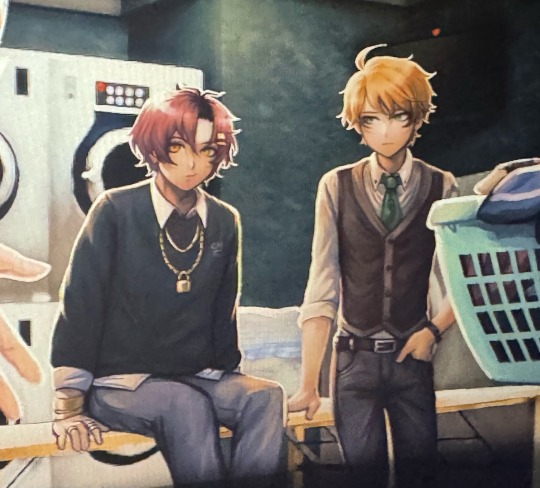
#Damon and Kai’s annoying selves#I love them#you could probably use that headline for most of the p:eg couples honestly#the fact that the highest res version of that image I could find was a screenshot of my laptop screen#I got tired of digging for it okay?/j#kai monteago#damon maitsu#kaimon#p:eg#project eden's garden#mor posts
183 notes
·
View notes
Text
How to make gardening easy
If you've grown up watching people garden, it's likely you've seen them working around with a big hoe, digging the soil, tilling it, constantly at the war with the weeds. This is traditionally how people garden, because of simple fact that no matter where you plant something, there's going to be native wild plants growing around it, likely suffocating it, unless you do something about it. So people traditionally, have had to fight a lot of weeds, so their garden plants could have all of the space, nutrients, water and sunlight to grow.
Due to this natural issue, that makes the planet a living space for us, the first problem you hit when you're starting a new garden, is a bed of weeds that need to be dealt with. There's grass, there's dandelions, maybe some tall native plants, and you're standing there sighing, thinking of how to convert this into a garden-friendly space. And the first human instinct is to get the space tilled and leveled. But that's difficult. Here's how you can do it without as much effort, by being super smart.
The smart thing is to start early. If you look at your intended garden space 4-6 months early, and you know you're going to have to deal with all these native plants, you can instead, prevent them from growing, by blocking the sunlight from them, and then letting the time take care of it. This is done by several different ways, but all of the include covering the ground with something that won't let sunlight get trough. The most common way is to get a bunch of cardboard (ideally without print), lay them out over your gardening space, put some rocks or weighty stuff over them, so they don't get blown away, and then you can walk away, get back in 4-6 months, remove them, and fresh and ready soil will be waiting for you. All that plant matter will die without sunlight, some of it will get eaten by bugs and turned into fertilizer for you, and you did maybe 1/20 of the work and invested some old cardboard.
If you don't have/like cardboard, this can also be done with a big tarp! A third way to do this, maybe not 100% efficient, is to cover the ground with mulch instead. This is what I do. I bring bags of dried leaves to the garden, spread them across the beds and cover them this way. It doesn't need to be leaves, you can cover the ground with straw, hay, dried grass, wood chips, pine needles, any organic matter. It's not completely efficient, because this organic matter will fall apart and turn into soil itself, so it might not give you a perfect coverage, and some plants might just grow in that instead, but! This method also makes sure your soil is already somewhat fertilized, and your plants will absolutely love all of the degraded organic matter; it will bring in bugs, it will bring in worms, it will bring life to the soil, your garden will be rich in life.
Now, let's say you've done it, you've gotten your empty garden bed, and you're about to plant in It, do you need to work the soil still? I would say no. Gardeners love to work the soil until it's in tiny little pieces, so the new plants have an easier time pushing the roots trough it, so it's easier to work with. And yeah the worked soil is lighter, fluffier, more filled with air pockets, which new plants do like! But what happens next is, the rain falls, the soil absorbs a lot of moisture, and then condenses and turns into that same hard airless dense matter that it was in the start. Digging the soil can only make it lighter and more filled with air, temporarily. That's why gardeners need to do it often!
Worked soil, especially rich in clay, will also get a very dry top surface, which can get rough and fill with cracks, making it look desert-like. Plants do not love this, and gardeners often have to work the soil just to break that cracked surface and get their plants some air. Soil that is dry and dense will also struggle to absorb a decent amount of water, so rainfall won't give it as much goodness as it could. So, what can you do instead, to make the soil palatable to your plants, and not susceptible to being dried up and dense and difficult for your plants? You can again, add organic matter on top.
If you're sowing your seeds directly, it's good to wait for your plants to grow a little, so they don't have to fight the mulch, but as soon as your plants are taller than a few inches, you are encouraged to cover the ground around them with any organic matter. What this will do is 1. Stop the surface of the soil from drying out, keep it very pleasant, soft and damp for the plant 2. Stop additional weeds from growing, save you from tons of weeding, 3. Protect your soil from erosion and 4. Fertilize your plants.
Soil erosion is a common problem in agriculture, where dried-up top of the soil is eroded by the wind, and ultimately turned into sand, which in a monocrop situation, can turn the entire area into a desert unless there's frequent rain. Now I'm not suggesting you could ever, by growing your little garden, create a desert area – you will not. But keeping your soil safe from both sun and wind will make sure it doesn't lose nutrients, water, and it's own structure, you're keeping it safe! And adding even more richness to it by letting the mulch slowly fall apart on top of it. Whenever it rains, the rainwater will fall into your mulch, take in nutrients from the parts that have composted, and then carry it down to your plant's roots. Your plants will get to eat new food every time it rains.
Generally once my plants outgrow all possible weeds and are not longer in the danger of being suffocated, I forget about weeds and just let them grow, they're not threat to me anymore, and having lots of greenery in times of drought is good for both the plants, and the little critters in your garden. Oh I forgot to tell you about the critters! One thing your garden needs is airy soil, filled with little holes and passages, that gardeners usually make manually with their tools. But what you're doing is luring thousands of little worms, bugs, critters and underground creatures, by all that rich mulch they love eating, so they dig the ground for you. They make holes and passages and air flows through them, making the soil light and fluffy. I've found that keeping the ground covered with mulch during the winter creates the entire different quality of soil than the one that isn't covered; the soil that was covered is so light and easy to work with, you can plant using just your fingers.
Having the quality of your soil improve to the point where you can work it with fingers, will usually happen after 3 years of gardening like this! In the meantime, you might need some tool just to get the seeds underground; I've been using a single spoon to plant everything in the garden. It's the smallest, and thus least-disruptive to the soil type of tool. We want all of the creatures in there to feel safe and undisturbed.
Even though I wrote all this pretending like I can totally garden like a smart person, in the reality I absolutely will completely ignore some parts of my garden all winter, check on it in the spring when it's super weedy, pull the weeds out by hand, and only then mulch and plant, laughing at myself for letting the soil quality go bad – but it still works. As long as I add mulch at some point in time, the garden succeeds. So if you're right now, in the height of spring, considering planting some beans – but you haven't done the whole '6 months earlier' procedure, no worry. I didn't either. I pulled out some weeds and planted beans today with a spoon, I'm gonna add mulch when they come out, and I'm still 100% certain they'll be fine, as long as there's rain. So many of our efforts cannot compare to even one single rainfall.
116 notes
·
View notes
Text
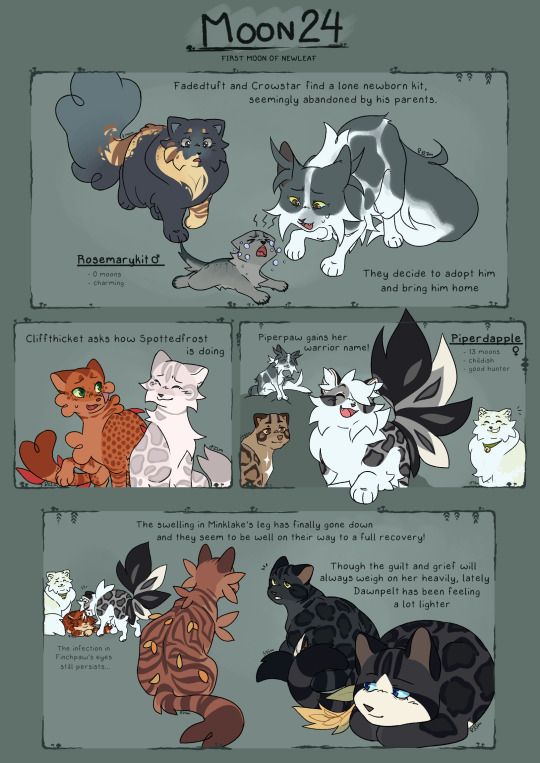
< Previous | First | Next >
Finally, we officially have SporeClan's first newborn kitten!!!
#clangen#clan generator#warriors oc#warrior cats#sporeclan#im so excited i got to draw a baby kitten i love drawing baby kittens SO MUCH!!!!!!!#AND CONGRATS TO PIPERDAPPLE!!!!! shes all grown up now <3#sc moons#sc:fadedtuft#sc:crowstar#sc:rosemarykit#sc:cliffthicket#sc:spottedfrost#sc:carolina#sc:piperpaw#sc:piperdapple#sc:fennelacorn#sc:finchpaw#sc:mousegrove#sc:minklake#sc:dawnpelt#by the way heads up but don't expect me to be very consistent the next few months!!!#its finally summer here and gardening is one of my favourite activities in the world so im gonna spend sooo much time doing that#i'll also be busy for other reasons. im gonna be hatching and raising baby chicks and going on a vacation sometime this summer too!!#plus maybe ill dig me a koi pond idk#so as you can tell. im very preoccupied lol
596 notes
·
View notes
Text
The thing I like about Project: Eden's Garden is that all of the characters actually FEEL like the people they're suppose to be. They ARE the Ultimates: the best of the best, full of potential, the literal enbodimets of the future. I think the best example of this is Wolfgang. He's the perfect lawyer: elegant, inteligent, polite and with a strong sense of justice. He's absolutley the one of those extremely talented people that elite institutions like Eden's Garden Academy would look for.
I like this a lot because it adds layer of prestige to the whole Ultimate theme that was absent in the og games. It also opens up so many possibilities and I can't wait to see what the team will cook with it
#i love how damon is so self centred and thinks as himself as better than non-ultimates#because of course he does! he was probably been told that his entire life!!#i also really want the creators to dig into topics like burnout and what it means to someone with so much potential#maybe also how such resposibility of world-changing talent can affect someone very young#oh god im so excited#project eden's garden#danganronpa#project: eden's garden#damon maitsu#wolfgang akire#p:eg
253 notes
·
View notes
Text

leafie dragon 🍃
#leafie draws#tiny bug digging in your garden#planting fruits and veggibrls#steals ur pickles#oc#leafie
459 notes
·
View notes
Text

its the mounders!
i was possessed by something last night to scribble out some designs for this alliance :D They're just such a fun and silly group, I love their vibes so much already 💚
#secret life#secret life smp#secret life fanart#mumbo jumbo#bdoubleo100#pearlescentmoon#smallishbeans#joel smallishbeans#gkm arts#digital art#artists on tumblr#doodles#lafakiwi draws#mcyt#mcyt fanart#bdubs fanart#mumbo fanart#pearlescentmoon fanart#i was goin for like. a garden kinda core bc mounding digging dirt garden#i thought itd be cute if they all had overalls or something#and joel has suspenders bc it fits the style but also gives fairground keeper bc of his funny little tower#life series
652 notes
·
View notes
Text
#writerblr#writers of tumblr#spilled ink#spilled words#gardens and digging#cw dead body#dorian don't look
140 notes
·
View notes